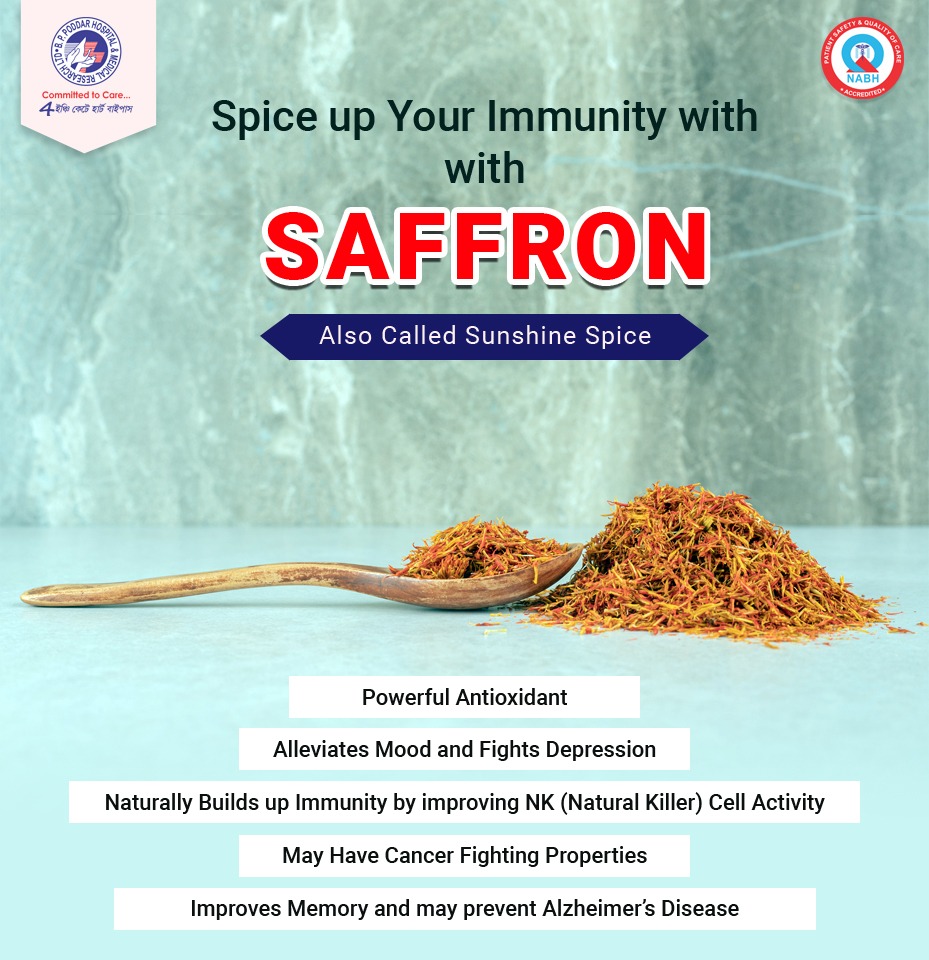
[cmsmasters_row][cmsmasters_column data_width="1/1"][cmsmasters_text]
Are you looking for health benefits of kesar? If yes, then you have come to the right place. But, first let's learn some important facts about this wonder spice. Saffron is a small, bulbous, perennial spice, a member of the lily family. To produce saffron, the stigmas [the part of the flower, which catches pollen] must be painstakingly handpicked, cut from the white style and then carefully laid on a sieve and cured over heat to deepen the flavor- a process so labor intensive that saffron is the most expensive spice in the world. Currently saffron is commercially produced in Iran, Greece, Morocco, Spain, Kashmir and Italy. Iran is the most important producer of saffron both, in terms of volume and quality, and Spain being the largest importer of the spice. Saffron is a labour intensive crop, which makes it so expensive. It has three delicate crimson stigmas in the centre,  which are hand-picked, placed on a riddle, and cured over heat to amplify its flavour. Apart from being the most expensive spice, there are many benefits of saffron, which makes it even more special.
The benefits and medicinal properties of this highly priced spice, make it a valuable culinary ingredient worldwide. Modern research suggests that saffron can be used as an aphrodisiac, diaphoretic [to cause sweating], carminative [to prevent gas] and to bring on mensuration. Some other benefits are mentioned here under:
1. Protects against cancer:  Saffron contains a dark orange, water soluble carotene called crocin, which is responsible for much of saffron's golden color. Crocin has been found to trigger apoptosis [ programmed cell death] in a number of different types of human  cancer  cells, leukemia, ovarian carcinoma, colon adenocarcinoma, and soft tissue sarcoma. Researchers in Mexico who have been studying saffron extract have discovered that saffron and its active components display an ability to inhibit human malignant cells. Not only does the spice inhibit cells that have become cancerous, but it has no such effect on normal cells and actually stimulates their formation and that of lymphocytes [immune cells that help destroy cancer cells].
2. Promotes learning and memory retention:  Recent studies have also demonstrated that saffron extract, specifically its crocin, is useful in the treatment of age related mental impairment. In Japan, saffron is encapsulated and used in the treatment of Alzheimer's Disease, memory loss and inflammation.
3. In delayed puberty:  In under developed girls, saffron has an overall stimulant effect. A pinch of saffron crushed in a table spoon of milk is useful to stimulate hormones and bring about desired effect.
4. To increase vitality:  In low libido saffron aids as a sexual stimulant and can be consumed in a dose of a pinch in a glass of milk at bed time
5. In patchy baldness:  Saffron mixed in liquorice and milk makes an effective topical application to induce hair growth  in alopecia.
6. Protection against cold: Saffron is a stimulant tonic and very effective to treat cold and fever; saffron mixed in milk and applied over the forehead quickly relieves cold.
7. Food Additives:  Saffron is an excellent replacement for synthetic food additives- for eg: instead of FD and C yellow no 5: a synthetic food coloring agent that is a very common allergy trigger, Saffron’s glorious yellow could be an acceptable hypoallergenic choice.With these kesar benefits known to us, this culinary treasure has to be used and especially in the winter months.
[/cmsmasters_text][/cmsmasters_column][/cmsmasters_row]